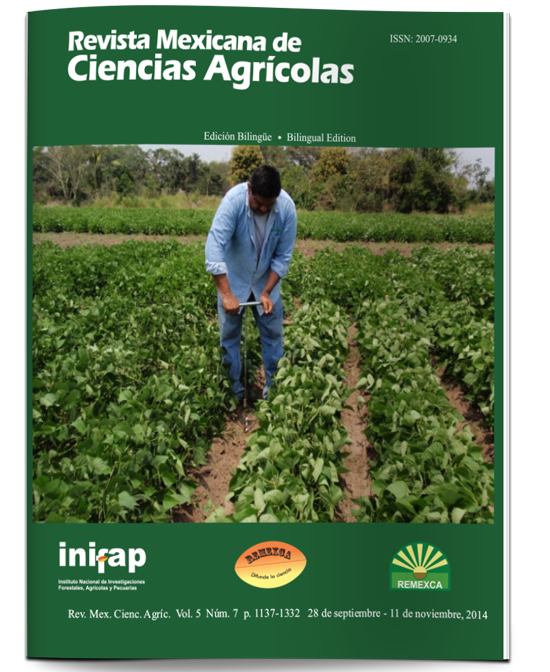Calcium imparts tolerance to high electrical conductivity in Lisianthus (Eustoma grandiflorum Raf. Shinn.)
DOI:
https://doi.org/10.29312/remexca.v5i7.840Keywords:
relative water content, hydroponics, ornamental, water potential, salinity stress toleranceAbstract
It has been reported that calcium (Ca) has a moderating effect on the effects of salinity, and which maintains the integrity of cellular membranes and reduce the loss of potassium (K). Lisianthus is an ornamental plant whose habitat suggests that it can adapt to extreme conditions. This study set out to assess whether the Ca (9 and 13 meq L-1) influences lisianthus tolerance to increased electrical conductivity (EC) (2.5, 4, 6 and 8 dS m-1) in the nutrient solution. The dry weight was reduced when EC 4 dS m-1 regardless of the level of Ca was raised; however, the biomass was recovered when the EC increased to 6 and 8 dS m-1 plants with 13 meq Ca L-1 of plants with extra Ca maintained a greater concentration of photosynthetic pigments when the EC was 6 and 8 dS m-1. Regardless of the concentration of Ca, the net photosynthesis affected EC to decrease when the EC increased to 4 dS m-1. The relative water content (RWC) in young leaves of plants supplemented with additional levels of Ca increased when treated with solutions with EC greater than 4 dS m-1, which was associated with a higher water potential. The concentration of nitrogen, K, Ca and magnesium was affected by the EC but this is recovered with additional Ca. The results indicate that lisianthus high salinity tolerant only if additional quantities are added Ca.
Downloads
Downloads
Published
How to Cite
Issue
Section
License
The authors who publish in Revista Mexicana de Ciencias Agrícolas accept the following conditions:
In accordance with copyright laws, Revista Mexicana de Ciencias Agrícolas recognizes and respects the authors’ moral right and ownership of property rights which will be transferred to the journal for dissemination in open access. Invariably, all the authors have to sign a letter of transfer of property rights and of originality of the article to Instituto Nacional de Investigaciones Forestales, Agrícolas y Pecuarias (INIFAP) [National Institute of Forestry, Agricultural and Livestock Research]. The author(s) must pay a fee for the reception of articles before proceeding to editorial review.
All the texts published by Revista Mexicana de Ciencias Agrícolas —with no exception— are distributed under a Creative Commons License Attribution-NonCommercial 4.0 International (CC BY-NC 4.0), which allows third parties to use the publication as long as the work’s authorship and its first publication in this journal are mentioned.
The author(s) can enter into independent and additional contractual agreements for the nonexclusive distribution of the version of the article published in Revista Mexicana de Ciencias Agrícolas (for example include it into an institutional repository or publish it in a book) as long as it is clearly and explicitly indicated that the work was published for the first time in Revista Mexicana de Ciencias Agrícolas.
For all the above, the authors shall send the Letter-transfer of Property Rights for the first publication duly filled in and signed by the author(s). This form must be sent as a PDF file to: revista_atm@yahoo.com.mx; cienciasagricola@inifap.gob.mx; remexca2017@gmail.
This work is licensed under a Creative Commons Attribution-Noncommercial 4.0 International license.



